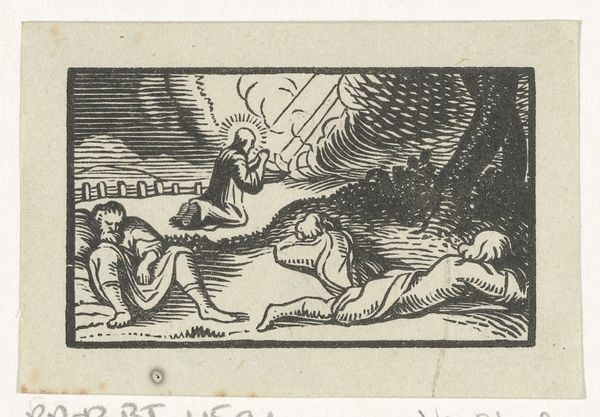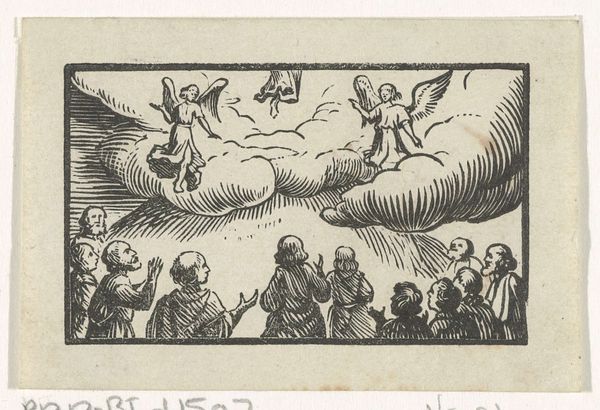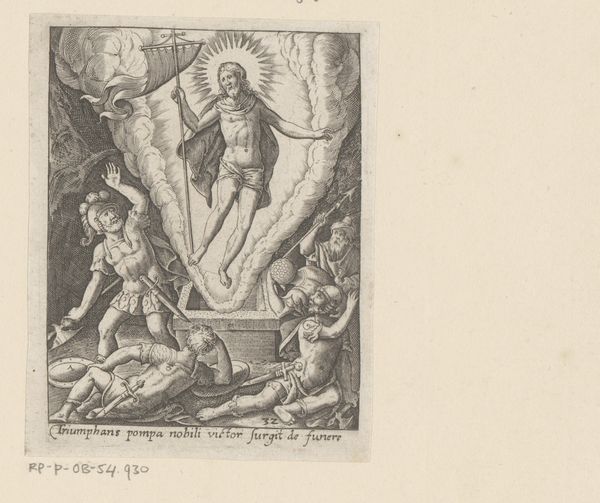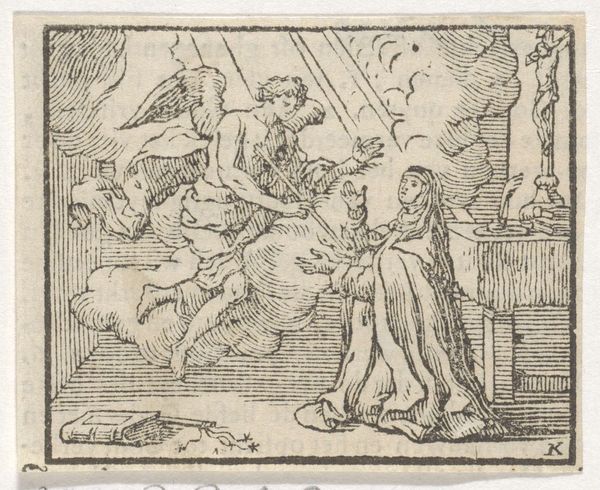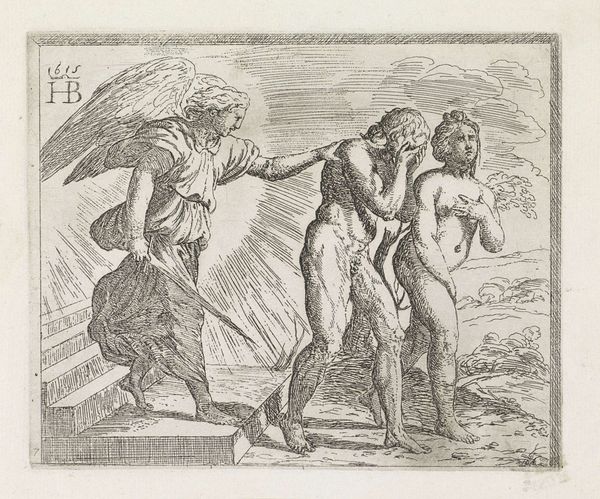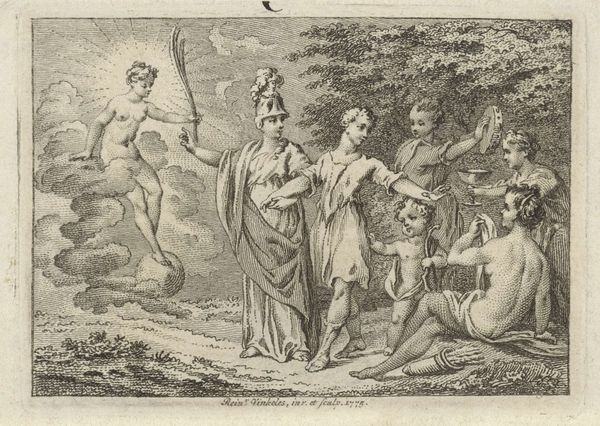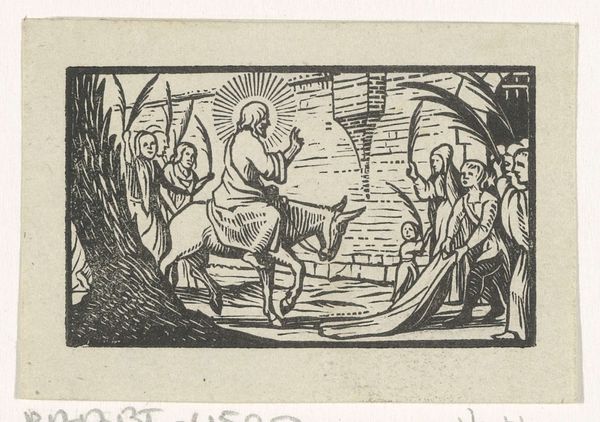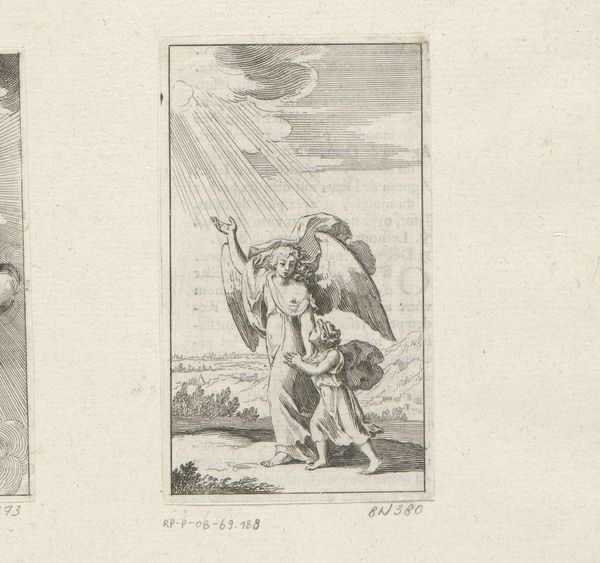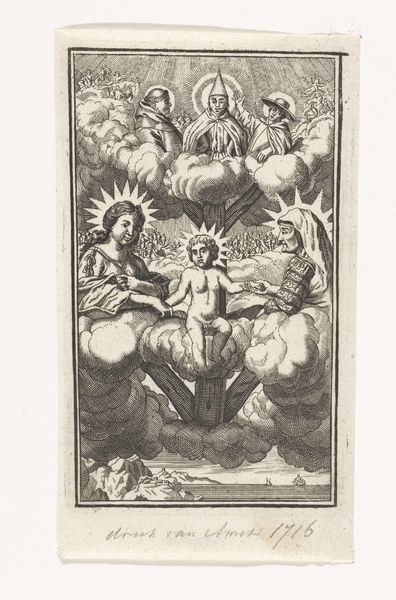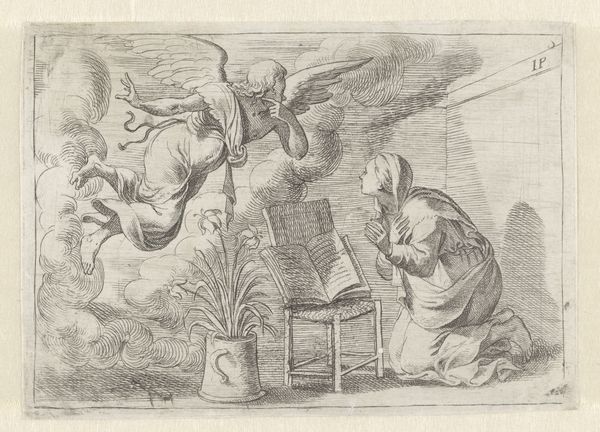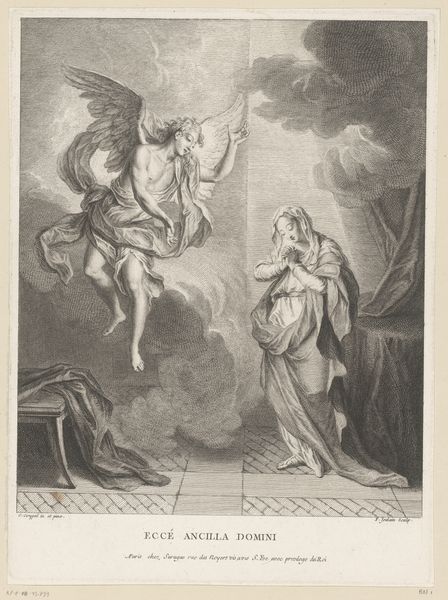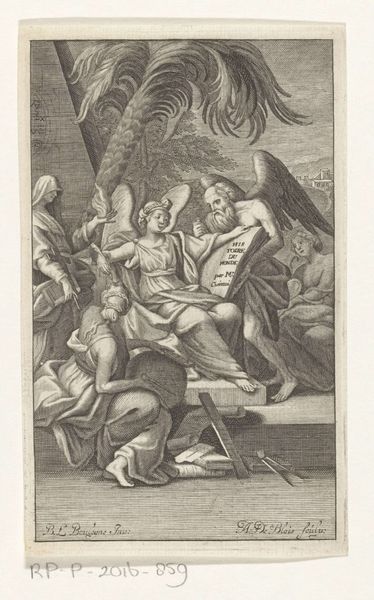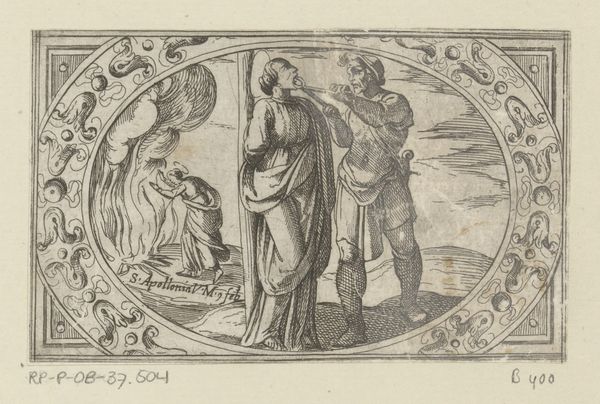
print, woodcut, engraving
#
byzantine-art
# print
#
figuration
#
woodcut
#
line
#
history-painting
#
engraving
#
christ
Dimensions: height 43 mm, width 64 mm
Copyright: Rijks Museum: Open Domain
Editor: This print, Dirck de Bray’s "Resurrection of Christ", made sometime between 1635 and 1694, is striking in its use of line and how Christ seems to burst from the scene. I'm curious, what can you tell us about it? Curator: Looking at this print, I immediately think about the labor involved in its production. Consider the artist, De Bray, meticulously carving the woodblock, and the press needed to produce these images, presumably for wider distribution. What social layers and material exchanges enabled its creation? Editor: So, the process of *making* it is as important as the image itself? Curator: Exactly. These prints often served multiple functions, from religious devotion to social commentary. Consider the economic context; what market was there for religious imagery like this? Who was buying them, and what did owning a print signify? Also, what limitations did the medium impose? Editor: I see what you mean! The relatively simple, stark lines make more sense considering this. You lose some nuance, but they are easily reproducible. What can you say about its byzantine-art style? Curator: Byzantine art emphasized symbolism and stylized forms. Here, that simplification is partly driven by the limitations of the medium and labor constraints, challenging a distinction from "high" art due to material need. How much control would the original artist even have over reproduction if the piece becomes popularized? Editor: It seems to take away a bit of that preciousness that's usually afforded to fine art. Curator: Yes, by looking at the means of production, we see how social and material conditions shape artistic expression. Hopefully it allows you to see this artwork not just as a depiction, but also an artifact of its time, with its social relations embedded in the woodcut. Editor: Absolutely. Now I see so much more to it than just a religious scene. Thank you.
Comments
No comments
Be the first to comment and join the conversation on the ultimate creative platform.
